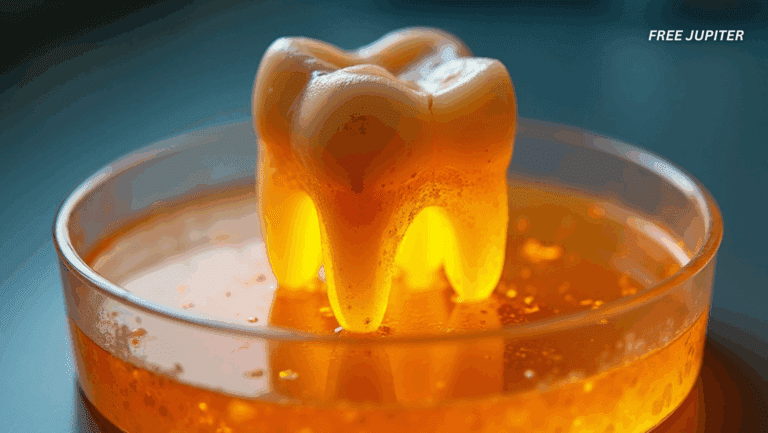Imagine you’re sitting in a concert hall, Beethoven’s Symphony No. 5 echoing through the air. Now, imagine that same music playing in a petri dish—and quietly wiping out cancer cells. Sounds like the plot of a bizarre sci-fi film, right? But real-life scientists in Brazil are now exploring that exact possibility.
🎻 Music in the Lab? Yes, Really.
At the Instituto de Biofísica Carlos Chagas Filho at the Federal University of Rio de Janeiro, a team of researchers led by biophysicist Dr. Márcia Alves Marques Capella has been conducting an unconventional experiment: playing music to cells. Not to calm them down, of course, but to see whether sound waves can directly impact their survival—particularly cancer cells.
To the surprise of many (and maybe even the researchers themselves), Beethoven’s famous Symphony No. 5 did more than just add ambiance. After exposing cancer cells to the music for several days, roughly 20% of those cells died off—while neighboring healthy cells remained completely unaffected.
That’s not just curious. That’s scientifically significant.
🎼 Not All Music Hits the Same
Of course, Beethoven wasn’t the only composer on the playlist. The scientists tested other pieces, including György Ligeti’s experimental and eerie Atmosphères. Interestingly, this modern orchestral piece also showed a cancer-killing effect, similar to Beethoven’s. However, Mozart’s Sonata for Two Pianos, often touted as the “Mozart Effect” miracle piece in other research, didn’t seem to have any noticeable impact. It was as if the cancer cells shrugged and kept multiplying.
This suggests it’s not just “any” music that creates an effect. Something about specific frequencies, tones, or patterns might be hitting a biological sweet spot—or weak spot—in cancer cells.
🔬 How Could This Even Work?
Here’s where things get fuzzy. The scientists don’t yet fully understand the “why” behind the effect. But they have a few theories.
One possibility is that music, at a cellular level, acts like a gentle (or not-so-gentle) vibration. Sound is, after all, just a wave—an organized movement of energy through air or liquid. When these waves hit cells, they might influence how those cells function. Perhaps certain frequencies resonate with internal components of cancer cells, destabilizing their membranes or interrupting their ability to divide. Kind of like hitting the right frequency to shatter glass—only on a microscopic, biological scale.
Another theory is that cancer cells, which are typically more sensitive to environmental changes than healthy cells, might be particularly vulnerable to the pressure or energy that comes with certain sound patterns.
Still, this is mostly speculative for now. Scientists are in the very early stages of untangling what’s really going on.
Read more: Scientists Develop New Urine Test Can Detect Pancreatic and Prostate Cancer Early—with High Accuracy
🥁 Next Up: Brazilian Beats
What’s especially exciting is that this research is far from over. The team plans to experiment with a wider range of music—specifically, styles native to Brazil like Samba and Funk Carioca. These genres tend to feature rhythmic complexity, intense percussion, and energetic tempos. Could they be even more effective than classical pieces?
By expanding the musical library, scientists hope to figure out which elements of a composition—tempo, pitch, rhythm, or even emotional tone—might matter most when it comes to cellular responses. Is it the intensity? The frequency changes? Or something completely unexpected, like harmony or dissonance?
🧬 A Soundtrack to Healing?
While the idea of Beethoven being a secret weapon against cancer may seem odd, it’s not entirely without precedent. Sound-based therapies are already used in other areas of medicine.
For example:
- Ultrasound (which uses high-frequency sound waves) is regularly employed to break up kidney stones or provide imaging during pregnancy.
- Music therapy has long been used to ease anxiety, manage pain, improve sleep, and enhance mood—especially in patients dealing with chronic illness or trauma.
- Binaural beats and low-frequency sound therapy are sometimes used in mental health practices to support relaxation or focus.
But using music—actual musical compositions—as a tool to target cancer cells directly? That’s a newer frontier. If proven effective, this could become a non-invasive, low-cost, and side-effect-free complement to traditional treatments like chemotherapy or radiation.
Read more: Doctor Beats Cancer Using Treatment He Helped Invent—He’s Now Been Cancer-Free For Over A Year
🚨 A Word of Caution
Before you plug in your headphones and crank up the Beethoven in hopes of a miracle, it’s important to be realistic.
This research is still in its early lab phase, done on cell cultures in controlled environments—not on real patients. There’s a massive gap between something working in a dish and becoming an approved medical treatment. Many potential therapies get stuck in that gap.
Still, these findings open the door to more serious scientific exploration. If we can understand exactly how certain music affects cell behavior, it might be possible to design sound-based therapies tailored to specific illnesses—or even personalize “sound prescriptions” for different types of cancers.
🎧 So… Could Music Be Medicine?
Maybe one day. For now, it’s a fascinating blend of art and science—a reminder that the human body, like music, is made up of vibrations, rhythms, and patterns. And perhaps, under the right circumstances, the two can speak the same language.
One thing’s for sure: Beethoven’s legacy might stretch far beyond concert halls. It could, one day, echo into the world of medicine.
So the next time you hear those opening notes—da-da-da-dummm—remember: you’re not just listening to music. You might be listening to a quiet revolution in how we understand healing.
Sound Surgery: How Histotripsy is Using Ultrasound to Blast Cancer Without a Scalpel
If the idea of Beethoven taking out cancer cells sounds strange, here’s another real-world breakthrough that proves sound can, quite literally, be powerful medicine.
This one’s called histotripsy, and unlike traditional surgery, there’s no scalpel, no incision, and no radiation involved. Instead, tumors are destroyed using nothing but carefully controlled ultrasound waves—high-frequency sound vibrations that, when precisely focused, can shatter diseased tissue like a wine glass meeting the right pitch.
🎯 What is Histotripsy, Exactly?
Histotripsy is a non-invasive medical procedure that uses high-intensity, focused ultrasound to mechanically break down cancerous tissue. Instead of using heat (like older ultrasound treatments), histotripsy works by creating tiny, rapid bursts of microbubbles in a targeted area of the body. These bubbles form and collapse almost instantly, producing a sort of microscopic jackhammer effect—powerful enough to pulverize unwanted cells.
Think of it as sound-based demolition at the cellular level.
And the best part? This destruction happens with pinpoint precision, sparing surrounding healthy tissue in the process.
🧠 Sounds Like Sci-Fi—But It’s Already Being Used
While this may sound futuristic, histotripsy is already moving beyond the lab and into real-world hospitals.
A Michigan-based company called HistoSonics has been at the forefront of developing this technology. Their system, known as Robotically Assisted Sonic Therapy (RAST), has been cleared by the FDA and is already being used to treat liver tumors in a select number of U.S. patients.
The technique is currently in clinical trials and early use in treating liver, kidney, and prostate cancers, and it’s gaining global attention. In the U.K., the National Health Service (NHS) recently greenlit pilot programs for histotripsy as an alternative treatment for liver tumors—offering hope to patients who either can’t undergo surgery or who want to avoid traditional cancer treatments like chemotherapy or radiation.
The appeal? Less risk, fewer side effects, and no need for incisions, anesthesia, or long hospital stays.
Read more: A 20-Cent Pill Could Be the Key to Stopping Colon Cancer, Scientists Say
🔬 How It Works — The Science Behind the Boom
Histotripsy targets cancer cells by focusing ultrasound waves onto a small region inside the body. When the waves meet at a focal point, they generate enough energy to create cavitation bubbles—tiny pockets of gas that rapidly form and implode.
When these bubbles collapse, they unleash mechanical force strong enough to destroy nearby tissue. It’s not about burning the cells or freezing them—it’s about vibrating them to death, quite literally.
Because cancer cells are often structurally weaker or more disorganized than normal cells, they’re more likely to be torn apart by these micro-explosions.
🛡️ Precision is the Key
Unlike some traditional treatments that might affect both good and bad cells, histotripsy’s real strength lies in its accuracy. Doctors can visualize tumors in real-time using imaging tools, adjusting the sound beam to stay locked onto only the diseased area. This reduces the risk of collateral damage to nearby organs or healthy tissue.
In essence, it’s surgery without ever cutting the skin.










